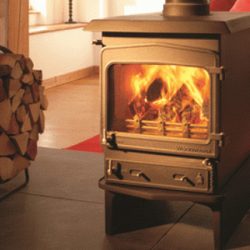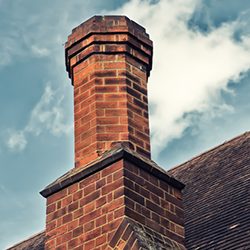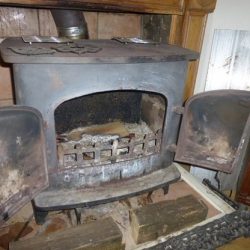Carbon Monoxide: What is it and what does it do?

The brain injury charity Headway is warning about carbon monoxide poisoning as the Autumn chill hits us, but what is carbon monoxide and what exactly does it do?
According to NHS Choices, carbon monoxide is a poisonous gas that has no smell or taste. Breathing it in can make you unwell, and it can kill if you’re exposed to high levels.
Every year in the UK, more than 200 people go to hospital with suspected carbon monoxide poisoning, which leads to around 50 deaths.
After carbon monoxide is breathed in, it enters your bloodstream and mixes with haemoglobin (the part of red blood cells that carry oxygen around your body), to form carboxyhaemoglobin.
When this happens, the blood is no longer able to carry oxygen, and this lack of oxygen causes the body’s cells and tissue to fail and die.
The symptoms of carbon monoxide poisoning aren’t always obvious, particularly during low-level exposure. A tension-type headache is the most common symptom of mild carbon monoxide poisoning.
Other symptoms include:
• dizziness
• nausea (feeling sick) and vomiting
• tiredness and confusion
• stomach pain
• shortness of breath and difficulty breathing.
The symptoms of exposure to low levels of carbon monoxide can be similar to those of food poisoning and flu. But unlike flu, carbon monoxide poisoning doesn’t cause a high temperature (fever).
The symptoms can gradually get worse with prolonged exposure to carbon monoxide, leading to a delay in diagnosis.
Your symptoms may be less severe when you’re away from the source of the carbon monoxide. If this is the case you should investigate the possibility of a carbon monoxide leak, and ask a suitably qualified professional to check any appliances you think may be faulty and leaking gas.
The longer you inhale the gas, the worse your symptoms will be. You may lose balance, vision and memory and, eventually, you may lose consciousness. This can happen within two hours if there’s a lot of carbon monoxide in the air.
Long-term exposure to low levels of carbon monoxide can also lead to neurological symptoms, such as difficulty thinking or concentrating and frequent emotional changes – for example, becoming easily irritated, depressed or making impulsive or irrational decisions.
Breathing in high levels of carbon monoxide gas can cause more severe symptoms. These may include:
• impaired mental state and personality changes (intoxication)
• vertigo – the feeling that you or the environment around you is spinning
• ataxia – loss of physical co-ordination caused by underlying damage to the brain and nervous system
• breathlessness and tachycardia (a heart rate of more than 100 beats per minute)
• chest pain caused by angina or a heart attack
• seizures – an uncontrollable burst of electrical activity in the brain that causes muscle spasms
• loss of consciousness – in cases where there are very high levels of carbon monoxide, death may occur within minutes.
What causes carbon monoxide to leak?
Carbon monoxide is produced when fuels such as gas, oil, coal and wood don’t burn fully. Burning charcoal, running cars and the smoke from cigarettes also produce carbon monoxide gas.
Gas, oil, coal and wood are sources of fuel used in many household appliances, including:
• boilers
• gas fires
• central heating systems
• water heaters
• cookers
• open fires.
Incorrectly installed, poorly maintained or poorly ventilated household appliances – such as cookers, heaters and central heating boilers – are the most common causes of accidental exposure to carbon monoxide.
The risk of exposure to carbon monoxide from portable devices may also be higher in caravans, boats and mobile homes. Other possible causes of carbon monoxide poisoning include:
• blocked flues and chimneys – this can stop carbon monoxide escaping, allowing it to reach dangerous levels.
• burning fuel in an enclosed or unventilated space – for example, running a car engine, petrol-powered generator or barbecue inside a garage, or a faulty boiler in an enclosed kitchen.
• faulty or blocked car exhausts – a leak or blockage in the exhaust pipe, such as after heavy snowfall, could lead to a build-up of carbon monoxide.
• paint fumes – some cleaning fluids and paint removers contain methylene chloride (dichloromethane), which can cause carbon monoxide poisoning if breathed in.
• smoking shisha pipes indoors – shisha pipes burn charcoal and tobacco, which can lead to a build-up of carbon monoxide in enclosed or unventilated rooms.
Treating carbon monoxide poisoning
Seek medical advice from your GP if you think you’ve been exposed to low levels of carbon monoxide. Go immediately to your local accident and emergency (A&E) department if you think you’ve been exposed to high levels.
Your symptoms will often indicate whether you have carbon monoxide poisoning, but a blood test will confirm the amount of carboxyhaemoglobin in your blood. A level of 30% indicates severe exposure.
People who smoke can often have higher than norma l levels of carboxyhaemoglobin in their blood, which can sometimes make it difficult to interpret the results.
Mild carbon monoxide poisoning doesn’t usually need hospital treatment, but it’s still important that you seek medical advice.
Your house will also need to be checked for safety before anyone returns. Read more about what to do if you suspect a leak.
Standard oxygen therapy
Standard oxygen therapy in hospital will be needed if you’ve been exposed to a high level of carbon monoxide, or you have symptoms that suggest exposure.
You’ll be given 100% oxygen through a tight-fitting mask (normal air contains around 21% oxygen). Breathing in concentrated oxygen enables your body to quickly replace carboxyhaemoglobin. Therapy will continue until your carboxyhaemoglobin levels decrease to less than 10%.
Hyperbaric oxygen therapy
Hyperbaric oxygen therapy (HBOT) floods the body with pure oxygen, helping it overcome the oxygen shortage caused by carbon monoxide poisoning.
There’s currently insufficient evidence regarding the long-term effectiveness of HBOT for treating severe cases of carbon monoxide poisoning. Therefore, standard oxygen therapy is usually the recommended treatment option.
HBOT may be recommended in certain situations – for example, if there’s been extensive exposure to carbon monoxide and nerve damage is suspected. The use of HBOT will be decided on a case-by-case basis.
Recovery
The length of time it takes to recover from carbon monoxide poisoning will depend on how much carbon monoxide you’ve been exposed to and how long you’ve been exposed to it.
Complications of carbon monoxide poisoning
Prolonged significant exposure to carbon monoxide can cause serious complications, including brain damage and heart problems. In very severe cases, it can result in death. Effects of severe carbon monoxide poisoning include:
• breathlessness
• chest pains
• seizures (fits)
• loss of consciousness.
Around 10-15% of people who have severe carbon monoxide poisoning develop long-term complications.
Brain damage
Prolonged exposure to carbon monoxide can cause memory problems and difficulty concentrating. It can also cause vision loss and hearing loss.
In rare cases, severe carbon monoxide poisoning can cause Parkinsonism, which is characterised by tremors, stiffness and slow movement.
Parkinsonism isn’t the same as Parkinson’s disease, which is a degenerative neurological condition linked to ageing.
Heart disease
Coronary heart disease is another serious condition that can develop as a result of long-term carbon monoxide exposure.
Coronary heart disease is where the heart’s blood supply is blocked or interrupted by a build-up of fatty substances (atheroma) in the coronary arteries.
If the blood supply is restricted, it can cause angina (chest pains). If the coronary arteries become completely blocked, it can cause a heart attack.
Harm to unborn babies
Long-term exposure to carbon monoxide gas can also damage an unborn baby. Babies exposed to carbon monoxide during pregnancy are at risk of:
• low birth weight
• perinatal death (stillbirth and death that occurs within the first four weeks of birth)
• behavioural problems.
Preventing carbon monoxide poisoning
It’s important to be aware of the dangers and identify any appliances in your house that could potentially leak carbon monoxide.
Maintaining and servicing appliances
Boilers, cookers, heating systems and appliances should be installed and regularly serviced by a reputable, registered engineer. Don’t attempt to install or service appliances yourself. Anyone carrying out work on installations and appliances in your home must be registered with a relevant association, such as the:
• Gas Safe Register (for gas appliances)
• Heating Equipment Testing and Approval Scheme (HETAS) (for solid fuel appliances)
• Oil Firing Technical Association (OFTEC) (for oil appliances).
Maintaining chimneys and flues
Make sure all chimneys and flues are swept regularly by a qualified sweep who’s a member of the:
• National Association of Chimney Sweeps (NACS)
• Guild of Master Chimney Sweeps
• Association of Professional Independent Chimney Sweeps (APICS).
Engine exhaust fumes
To protect you from carbon monoxide poisoning caused by exhaust fumes:
• don’t leave petrol-fuelled lawnmowers or cars running in the garage
• make sure your car’s exhaust is checked every year for leaks
• make sure your exhaust isn’t blocked before turning the engine on – for example, after heavy snowfall.
Carbon monoxide alarms
Install a carbon monoxide alarm in your home to alert you if there’s a carbon monoxide leak. However, an alarm isn’t a substitute for maintaining and regularly servicing household appliances.
You can buy a carbon monoxide alarm from a DIY or hardware store. Make sure it’s approved to the latest British or European Standard (BS Kitemark or EN50291). Call Sarsen Energy on 01264 850 742 if you are unsure and we will advise you.
Other safety tips at home and in the workplace
Follow the safety tips below to help protect yourself at home and in the workplace:
• Never use ovens or gas ranges to heat your home.
• Never use oversized pots on your gas stove, or place foil around the burners.
• Make sure rooms are well-ventilated and don’t block air vents. If your home is double-glazed or draught-proofed, make sure there’s still enough air circulating for any heaters that are in the room.
• Don’t use gas-powered equipment and tools inside your home if you can avoid it. Only use them in a well-ventilated area, and put the engine unit and exhaust outside.
• Always wear a safety mask when using chemicals that contain methylene chloride.
• Don’t burn charcoal in an enclosed space, such as on an indoor barbecue.
• Don’t sleep in a room that has an unflued gas fire or paraffin heater.
• Fit an extractor fan in your kitchen (if it doesn’t already have one).
What to do if you suspect a carbon monoxide leak
If your carbon monoxide alarm sounds or you suspect a leak:
• stop using all appliances, switch them off, and open doors and windows to ventilate the property
• evacuate the property immediately – stay calm and avoid raising your heart rate
• call the gas emergency number on 0800 111 999 to report the incident,or the Health and Safety Executive (HSE) Gas Safety Advice Line on 0800 300 363
• don’t go back into the property – wait for advice from the emergency services
• seek immediate medical help – you may not realise you’ve been affected by the carbon monoxide, and going outside into fresh air won’t treat any exposure by itself.
Being aware of the signs
It’s very important to be aware of the risk of carbon monoxide poisoning and to look out for warning signs. You should suspect carbon monoxide poisoning if:
• other people in your house, flat or workplace fall ill with similar symptoms
• your symptoms disappear when you go away – for example, on holiday – and return when you come back
• your symptoms tend to be seasonal – for example, if you get headaches more often during the winter when the central heating is used more frequently
• your pets also become ill.
Other possible clues of a carbon monoxide leak include:
• black, sooty marks on the front covers of gas fires
• sooty or yellow/brown stains on or around boilers, stoves or fires
• smoke building up in rooms due to a faulty flue
• yellow instead of blue flames coming from gas appliances
• pilot lights frequently blowing out.
At-risk groups
Carbon monoxide is a danger to everyone, but certain groups are more vulnerable than others. These include:
• babies and young children
• pregnant women
• people with chronic heart disease
• people with respiratory problems, such as asthma.
Pets are often the first to show signs of carbon monoxide poisoning. The smaller an animal or a person is, the faster they’ll be affected.
Investigate the possibility of a carbon monoxide leak if your pet suddenly becomes ill or dies unexpectedly, and their death isn’t related to old age or an existing health condition.
Call Sarsen Energy
If you have any questions or worries about carbon monoxide please call Sarsen Energy on 01264 850 742 and we will do our best to advise you.
Warm and safe winter.


